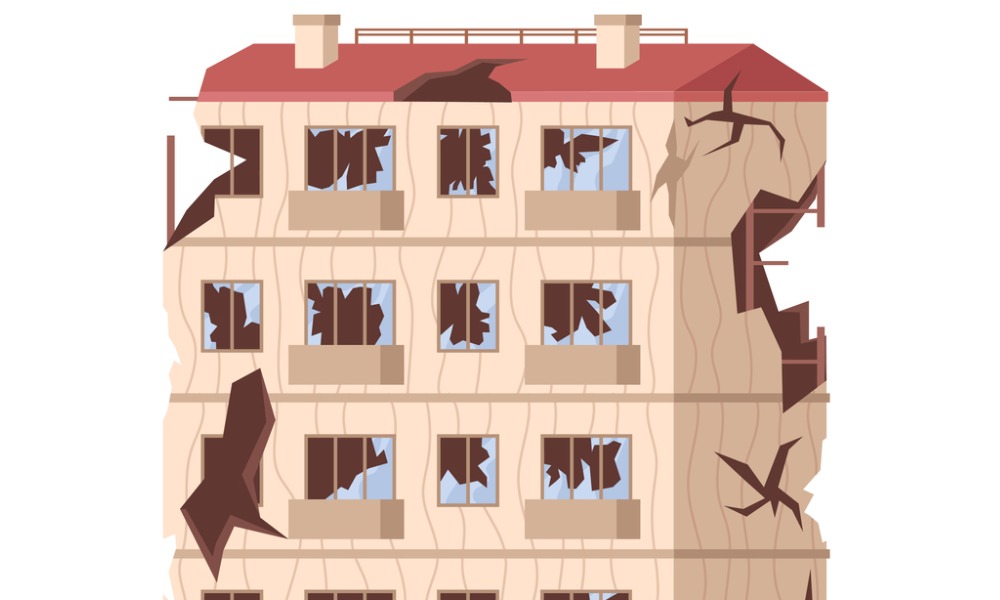Financial distress mounts in multifamily real estate sector

Owners of some rental buildings are starting to struggle due to rising interest rates and waning demand in once-booming Sun Belt cities, The New York Times reported.
Despite recent years of soaring rents due to housing shortages and inflation, apartment buildings, particularly in the South and Southwest, are showing signs of financial distress. Analysts are concerned that up to 20% of loans on these properties could be at risk of default.
The pandemic saw a surge in rents, but this trend has stalled, with some areas even experiencing declines. Rising interest rates, driven by the Federal Reserve’s anti-inflation measures, have made mortgages more expensive for building owners. Overbuilding of high-end apartments in cities like Houston and Tampa, where renter demand has decreased since 2021 and 2022, has exacerbated the issue.
Although only 1.7% of multifamily loans are currently delinquent, this is significantly lower than the 7% delinquency rate for office loans and 6% for hotel and retail loans, according to the Commercial Real Estate Finance Council (CREFC).
Yet, there is growing concern that more apartment loans could become distressed.
“Multifamily is not coming up and punching you in the nose right now, but it’s on everyone’s radar,” CREFC executive director Lisa Pendergast told the New York Times.
Apartment building owners face varied challenges. Some struggle to fill units and generate sufficient income, while others, despite having occupied units, cannot raise rents quickly enough to cover rising loan payments.
CRED iQ reported that nearly one in five multifamily loans is at risk of becoming delinquent.
Particularly worrying are floating-interest mortgages, which have seen payments rise with increasing interest rates over the past two years.
For instance, ZMR Capital, which bought The Reserve, a 982-unit building in Brandon, Fla., near Tampa, in early 2022, has seen interest payments rise by over 50%, or more than $6 million. This led to the building’s owner being unable to repay the mortgage due in April.
Similarly, OWC 182 Holdings, owner of the 182-unit Oaks of Westchase in Houston, has failed to make mortgage payments since April due to high interest costs.
“The spike in rates is causing the debt service costs on these properties to surge,” CRED iQ chief Mike Haas said.
Even those with fixed-rate mortgages face challenges refinancing at higher interest rates. Approximately $250 billion worth of multifamily loans are due this year, according to the Mortgage Bankers Association.
“With interest rates much higher and rents beginning to decline on average nationwide, if you need to refinance a loan, then you are refinancing into a more expensive environment,” said Mark Silverman, a partner at Locke Lorde. “It’s harder to make these buildings profitable.”
Concerns are particularly concentrated in the Sun Belt, where many developers built apartment complexes to meet expected demand during the pandemic. However, the influx of new residents has slowed, leading to an oversupply of luxury apartments.
In 19 major Sun Belt cities, including Miami, Atlanta, Phoenix, and Austin, Texas, 216,000 new units became available last year, but demand fell to 95,000 renters.
“The developers just got so far out of hand,” said Jay Lybik, national director of multifamily analytics at CoStar Group. “Everybody thought the demand we saw in 2021 was going to be the way it was going to be going forward.”
Investors like Tides Equities, which expanded their portfolios in the Sun Belt, are now struggling with falling rents and prices. Tides Equities’ apartment holdings grew from about $2 billion to $6.5 billion in a few years, but the firm is now facing difficulties in making loan payments and covering operating expenses.
Read next: Blackstone acquires apartment REIT for $10 billion
Despite these challenges, apartment buildings are in a better financial position than office buildings. Multifamily properties can be financed through government-backed mortgage giants Fannie Mae and Freddie Mac, providing a safety net other real estate sectors lack.
“If regional banks and large investment banks decide they’re not going to be making multifamily loans, then Fannie and Freddie will simply get more of the business,” said Lonnie Hendry, the chief product officer of CRE data firm Trepp. “It’s a fail-safe that the other asset classes simply do not have.”
While the shift to remote work has heavily impacted office spaces, the need for housing remains, supporting the long-term outlook for multifamily properties. However, some industry experts anticipate a wave of defaults in the apartment sector, which could intensify problems across commercial real estate.
“There are a lot of really strong multifamily assets but there is going to be collateral damage, and I don’t think it will be small,” Silverman said.
Stay updated with the freshest mortgage news. Get exclusive interviews, breaking news, and industry events in your inbox, and always be the first to know by subscribing to our FREE daily newsletter.



